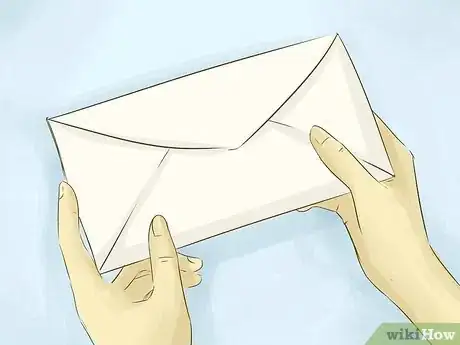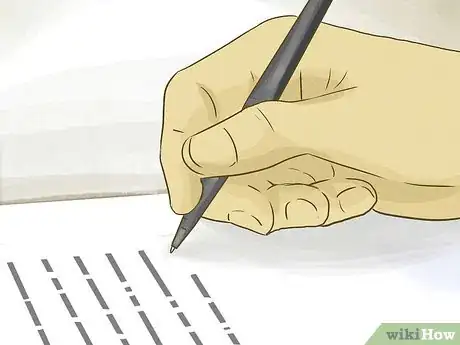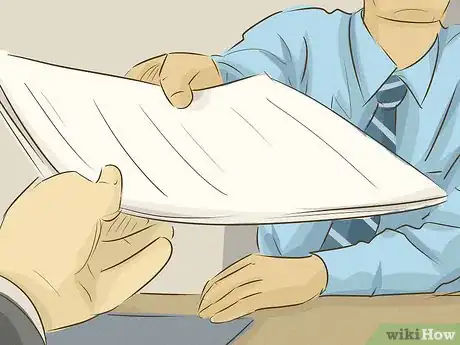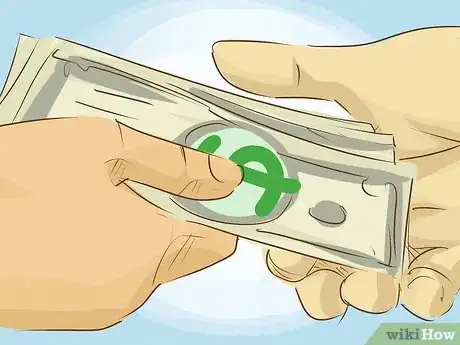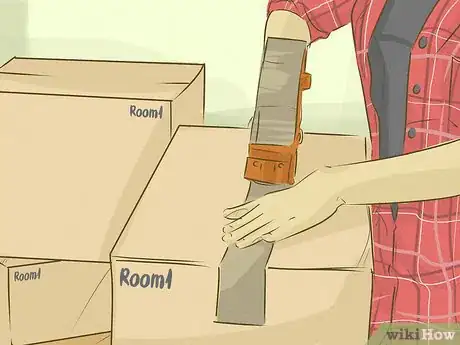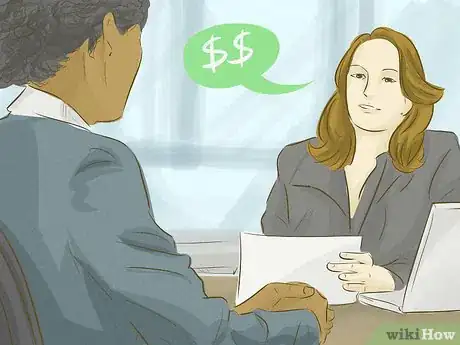This article was written by Jennifer Mueller, JD. Jennifer Mueller is an in-house legal expert at wikiHow. Jennifer reviews, fact-checks, and evaluates wikiHow's legal content to ensure thoroughness and accuracy. She received her JD from Indiana University Maurer School of Law in 2006.
There are 7 references cited in this article, which can be found at the bottom of the page.
This article has been viewed 57,597 times.
Maybe there was an unforeseen change in the business climate, or maybe your business just didn't take off the way you thought it would, but whatever the reason, you may find yourself in a situation where you need to terminate your commercial lease before the end of the lease term. Careful negotiation or attention to an early termination clause already included in your lease can preserve the positive relationship you have with your landlord. However, even if you have no choice but to break your lease, there are still ways you can smooth the transition and limit the costs involved.[1] [2]
Steps
Negotiating Early Termination
-
1Send a letter to your landlord. If you need to end your lease early and want to negotiate early termination with your landlord, send him or her a letter requesting a meeting to discuss the issue.[3]
- Read your lease carefully before you contact your landlord, and make sure there isn't already an early-termination clause you should follow.
- If your lease does contain an early-termination clause, but your situation doesn't meet the conditions of that clause, include that information in your letter so your landlord understands why you need to negotiate outside of the lease.
- Your letter should be collegial, but professional. Approach your landlord as a fellow businessperson, and explain that you would like to negotiate an early termination of the lease agreement.
- Depending on how long you've leased the property and your relationship to the landlord, you may want to attach a copy of your lease for reference.
-
2Arrange a private meeting. Try to meet with your landlord in a neutral location that has a minimum of distractions so the two of you can talk without interruption.[4] [5]
- A neutral location means that neither you or your landlord have the upper hand as a result of your surroundings.
- Make sure you have all the information and documentation you need in advance of the meeting so you're prepared for questions your landlord may have.
- You may want to write an outline or checklist of issues you want to discuss to keep your negotiations on track and make sure you don't inadvertently leave out something important to you.
- If you have a tense relationship with your landlord, or have had problems or disagreements in the past, you may want to suggest using a neutral third party as a mediator to facilitate your negotiations.
Advertisement -
3Discuss terminating your lease. Explain to your landlord the reasons you need to get out of the lease early, and listen to his or her concerns.[6] [7] [8] [9]
- Propose terms that come closest to satisfying most, if not all, of the issues presented by you and your landlord.
- You and your landlord have a lot of flexibility to negotiate an agreement that best meets your needs. For example, you might offer to give up some or all of your security deposit in exchange for the ability to terminate your lease early.
- Keep in mind that your landlord also is a businessperson, and his or her primary concern is not losing money on the property. Reaching an agreement with you will benefit your landlord in that he or she won't have to worry about chasing you down for the money or having a property sitting vacant for an extended period of time.
- If you have another tenant in mind who is willing to take over your lease, you may be able to negotiate an assignment of the lease with your landlord so the new tenant can take over from you and fulfill your obligations under the lease in your stead.
-
4Put any agreement in writing. You and your landlord can always terminate a lease by agreeing to do so, but your agreement typically must be in writing to have any legal effect.[10]
- If you have a written lease, its terms can only be changed with another written contract signed by both parties.
- However, even if you don't have a written lease, writing out the terms you've negotiated for terminating the lease protects you and keeps your landlord from later changing the agreement or arguing the terms were different than you thought.
- Both you and your landlord should read over the termination agreement carefully before signing it. Make sure you the terms make sense and reflect your understanding of the agreement.
- Keep in mind that your lease agreement will be void on the date specified for the termination to take effect, so make sure any obligations related to the end of the lease also are included in your termination contract.
- Once you're both happy with the written contract, print up two copies and sign and date each of them. That way you and your landlord each have an original copy of the agreement.
Using a Pre-existing Termination Clause
-
1Review your lease. If your landlord allows you to terminate your lease early, the terms and conditions under which early termination are allowed typically will be included as a clause in the original lease agreement you signed.[11] [12]
- The early-termination clause will specify what you must do if you want to get out of your lease. Read these terms carefully and calculate the amount you will owe your landlord if you terminate your lease early under the clause.
- Commercial leases may include a provision that allows for early termination only under certain conditions, such as a failure to meet income projections. If the clause in your lease includes conditions, you'll have to evaluate your situation to see if you meet them.
-
2Send your landlord written notification. Early termination clauses in leases typically require you to provide notification at least 30 days in advance of the date you want to terminate your lease.[13] [14]
- The amount of notice required by an early-notification clause typically depends on the length of the lease as a whole. While you may only have to give 30 days' notice to terminate a year-long lease, the notice period may be as long as six months if you have a five-year lease.
- Reference the clause in the lease that you're using, and restate that clause's requirements.
- For example, you might write: "I want to terminate my lease early, in accordance with Paragraph 7.4 of the lease agreement. This letter constitutes the 30 days' notice of that intention as required by that clause. I understand I also must pay you two months' rent on or before the day I vacate the premises."
- Attach a copy of your lease to your letter, or at least the page with the early termination clause, as reference.
-
3Make any required payments. Most early-termination clauses require you to pay a couple months' rent, or buy out a percentage of the remaining lease, often depending on how much time you have left.[15] [16]
- Early-termination clauses often require you to reimburse your landlord for any costs he or she incurs to turnaround the property so it is suitable to lease to a new tenant, and may require you to relinquish any claim to your security deposit.
- Typically the clause will include a method of calculating the total amount of money you owe your landlord, but you may want to request a written accounting and statement for your records rather than just sending your landlord a check.
-
4Vacate the premises. Once you've set the clause in motion, you must leave the leased property by the agreed date or you may have to pay additional charges.[17]
- Generally, you want to aim to leave the property in the same condition it was in when you took it over.
- Your landlord can't charge you for normal wear and tear, which may be significant if you've operated in that location for several years.
- However, you want to arrange to make repairs to anything such as a hole in the wall or marks left by fixtures you installed that wouldn't constitute normal wear and tear.
-
5Follow up with your landlord. Within a specified period of time, typically 30 days, your landlord must assess damages on the property and provide you with an itemized list of deductions to your deposit.[18]
- Your landlord may charge you a fee to terminate your lease early. However, by law this fee can't exceed the costs the landlord actually incurs as a result of your lease termination.
- You may be entitled to a refund if, for example, your landlord is able to re-rent the space you leased within a short period of time after you leave.
- However, keep in mind that your landlord is unlikely to voluntarily issue you a check without prompting. If you see new tenants moving into the space within a few weeks after you left, send your former landlord a letter and ask for an accounting of costs.
Breaking Your Lease
-
1Send notice to your landlord. If you are unable to work out an agreement with your landlord but still must leave the property, provide your landlord with at least 30 days' notice that you are leaving.[19] [20]
- You always have the option to simply break the lease – even if your landlord makes statements to the contrary.
- However, keep in mind that breaking your lease without an early termination agreement may end up costing you more money as well as potentially causing bad blood between you and your landlord.
- Make sure you read your lease agreement carefully. While residential leases typically require 30 days' notice if the tenant wants to break the lease, commercial leases may require 60 or 90 days' notice.
-
2Vacate the premises. Leave the leased space in a clean condition free of any personal property or debris, and hand off the keys to your landlord by the date you gave in your notice.[21] [22] [23]
- Once you've left the property, you may be responsible for continuing to pay rent – at least until your landlord finds a new tenant – but you won't be responsible for the property itself.
- If your landlord has an inspection form, review it before you leave to make sure you won't be on the hook for any repairs.
- You also can create your own inspection checklist and look over the condition of the walls, floors, windows, and other main features of your space.
- Generally, you should aim to leave the premises in the same condition as they appeared when you first moved into the space – minus normal wear and tear.
- Keep in mind that any fixtures or other property you leave in the space after you've left typically are considered abandoned and become the property of your landlord. Don't leave anything behind that you want to keep, because you may forfeit the right to remove it or have it returned.
-
3Assist in finding a new tenant. Although your landlord can hold you liable for the entire amount of remaining lease payments, he or she has a legal duty to mitigate those damages by finding someone else to lease the property.[24] [25] [26]
- If your landlord is unable to find a tenant to rent the place at the same or higher rent than you paid, you may be liable for the rent for the remainder of the lease – or the difference between your rent and the rent the new tenant is paying.
- This may be a problem if the rental market is stagnant, leaving you on the hook for far more money than you would be if businesses are booming and there's a high demand for commercial spaces like yours.
- You can help lower your costs by finding a suitable tenant to take your place. However, keep in mind that your landlord does have the right to refuse to lease to someone who doesn't meet his or her requirements.
-
4Make payment arrangements. In addition to retaining the entire amount you provided as a damage deposit, your landlord may require additional money from you for breaking your lease early.[27] [28]
- If your landlord is uncooperative, or is threatening to sue you for a substantial amount of money, you may want to get a business lawyer involved to protect your financial interests.
References
- ↑ https://www.legalzoom.com/assets/legalforms/Termination%20of%20Lease.pdf
- ↑ http://www.entrepreneur.com/article/173568
- ↑ http://www.realestatelawyers.com/resources/real-estate/commercial-real-estate/early-termination-a-commercial-lease.htm
- ↑ http://www.realestatelawyers.com/resources/real-estate/commercial-real-estate/early-termination-a-commercial-lease.htm
- ↑ https://hbr.org/2014/06/how-to-negotiate-with-someone-more-powerful-than-you
- ↑ https://www.legalzoom.com/assets/legalforms/Termination%20of%20Lease.pdf
- ↑ http://www.entrepreneur.com/article/173568
- ↑ http://www.nolo.com/legal-encyclopedia/free-books/small-business-book/chapter12-4.html
- ↑ http://www.realestatelawyers.com/resources/real-estate/commercial-real-estate/early-termination-a-commercial-lease.htm
- ↑ https://www.legalzoom.com/assets/legalforms/Termination%20of%20Lease.pdf
- ↑ https://www.legalzoom.com/assets/legalforms/Termination%20of%20Lease.pdf
- ↑ http://www.entrepreneur.com/article/173568
- ↑ https://www.legalzoom.com/assets/legalforms/Termination%20of%20Lease.pdf
- ↑ http://www.nhbr.com/September-5-2014/Early-termination-rights-in-commercial-leases/
- ↑ https://www.legalzoom.com/assets/legalforms/Termination%20of%20Lease.pdf
- ↑ http://www.nhbr.com/September-5-2014/Early-termination-rights-in-commercial-leases/
- ↑ http://www.nolo.com/legal-encyclopedia/free-books/small-business-book/chapter12-4.html
- ↑ https://www.legalzoom.com/assets/legalforms/Termination%20of%20Lease.pdf
- ↑ https://www.legalzoom.com/assets/legalforms/Termination%20of%20Lease.pdf
- ↑ http://www.nolo.com/legal-encyclopedia/free-books/small-business-book/chapter12-4.html
- ↑ https://www.legalzoom.com/assets/legalforms/Termination%20of%20Lease.pdf
- ↑ http://www.nolo.com/legal-encyclopedia/free-books/small-business-book/chapter12-4.html
- ↑ http://www.alston.com/files/Event/b1433f0b-552c-4b5e-9707-00491722453d/Presentation/EventAttachment/3b719407-21f8-4edc-a448-08a4c276e85d/Pages%20from%2048963.pdf
- ↑ https://www.legalzoom.com/assets/legalforms/Termination%20of%20Lease.pdf
- ↑ http://www.entrepreneur.com/article/173568
- ↑ http://www.nolo.com/legal-encyclopedia/free-books/small-business-book/chapter12-4.html
- ↑ https://www.legalzoom.com/assets/legalforms/Termination%20of%20Lease.pdf
- ↑ http://www.nolo.com/legal-encyclopedia/free-books/small-business-book/chapter12-4.html
About This Article
Most commercial lease contracts should have a clause for terminating early. Check the terms in your lease before you contact your landlord. Often, you’ll have to pay a fee or extra months of rent to end the contract early, but it’s ultimately down to your landlord’s discretion. Set up a meeting with them and explain your reasons for wanting to terminate early. You may be able to negotiate an early termination if you forgo your deposit or help find a new tenant. Remember that your landlord’s main priority will be not losing out on profit. Make sure you get your agreement in writing so it’s legally binding. For more tips from our Legal co-author, including how to leave your commercial property in good condition, read on!
